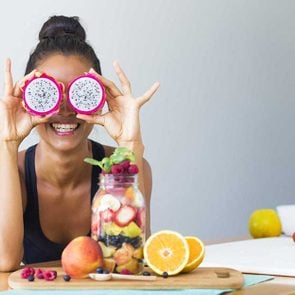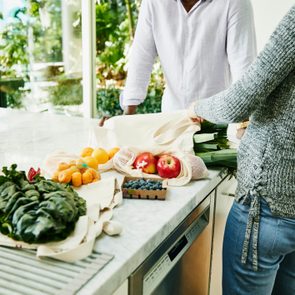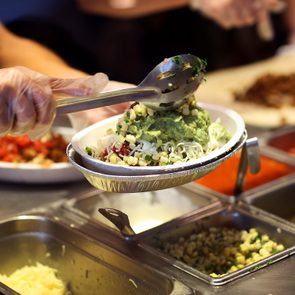3 Plant-Based Breakfast Ideas Nutritionists Actually Love
Updated: Apr. 28, 2021
Need some plant-based breakfast ideas? Here are tips and recipes for healthy, delicious breakfasts that will satisfy your hunger.
How to eat more plant-based breakfasts
Plant-based has become a buzzword in the world of health and wellness—and for good reason.
This eating style differs from vegan and vegetarian diets, as it allows the inclusion of at least some meat and animal products, poultry, and seafood. Thus, this makes a plant-based diet more appealing for those who don’t want to fully commit to veganism or vegetarianism.
Essentially, following a plant-based diet simply means adding more plants to your plate.
“Many people think plant-based eating means you can’t eat any meat or animal products, and that’s simply not the case,” says Bridget Wood, a registered dietitian nutritionist in Reno, Nevada. “It means putting a heavier emphasis on plant foods like vegetables and fruits and reducing but not eliminating meat consumption,” she explains.
That said, if you’re following a plant-based diet, you can absolutely end up having completely vegetarian or vegan meals. (Here’s the difference between plant-based vs. vegan.)
On the other hand, a vegan diet doesn’t include any animal products at all—not even honey, gelatin, or collagen. And different types of vegetarian diets exist. For instance, a lacto-ovo vegetarian diet allows the inclusion of dairy and eggs, while a pescatarian diet allows the inclusion of seafood.
(Want to eat less meat but not commit to being a vegetarian? Try the flexitarian diet.)
So, if you’re interested in following a plant-based diet and are big on eating a healthy breakfast, you’re probably wondering what plant-based breakfast options exist. Hint: plenty.
Here’s what to know about plant-based eating, how to make a plant-based breakfast, plus, three recipes from registered dietitians.
Benefits of eating more plant-based meals
Following a plant-based diet allows you to add more vitamins, minerals, and antioxidants to your plate.
“From a nutrition and health perspective, plant-based eating plans have a higher diet quality,” says Toby Smithson, RDN, and a certified diabetes educator.
“And this eating plan is better for your heart because there is less saturated fat, cholesterol, and sodium. People following a plant-based eating lifestyle have seen improvement in their sleep, inflammation, and immunity—and an increase in satiety and digestion.”
As well, a 2017 study in Nutrients found that eating a vegetarian diet may help with weight loss and may lower your risk of type 2 diabetes and coronary heart disease.
Plus, when following a plant-based diet, you typically eat more fiber—particularly because many plant proteins such as beans, legumes, and tempeh offer it.
“Fiber is linked to decreasing ‘bad’ [low-density lipoprotein] LDL cholesterol and can help with digestive issues like constipation and act as food for the good bacteria in your gut,” notes Talia Hauser, RD, in The Colony, Texas.
(Check out these vegan diet health benefits.)
How to make a balanced plant-based breakfast
When preparing a nutritious plant-based breakfast, aim to incorporate at least two of the following: a protein (such as tofu, chickpeas, tempeh, or seitan), a healthy fat (like avocado, olive oil, or almond butter), and a source of fiber (such as berries, bananas, or oatmeal) into your breakfast.
These nutrients help you to feel fuller for longer—and ideally, you should aim for all three. (Here are some tips for vegetarian and vegan meal prep.)
Healthy plant-based breakfast recipes
Ready to whip up a healthy plant-based breakfast? Try one of these dietitian-recommended recipes.
Peach Overnight Oats
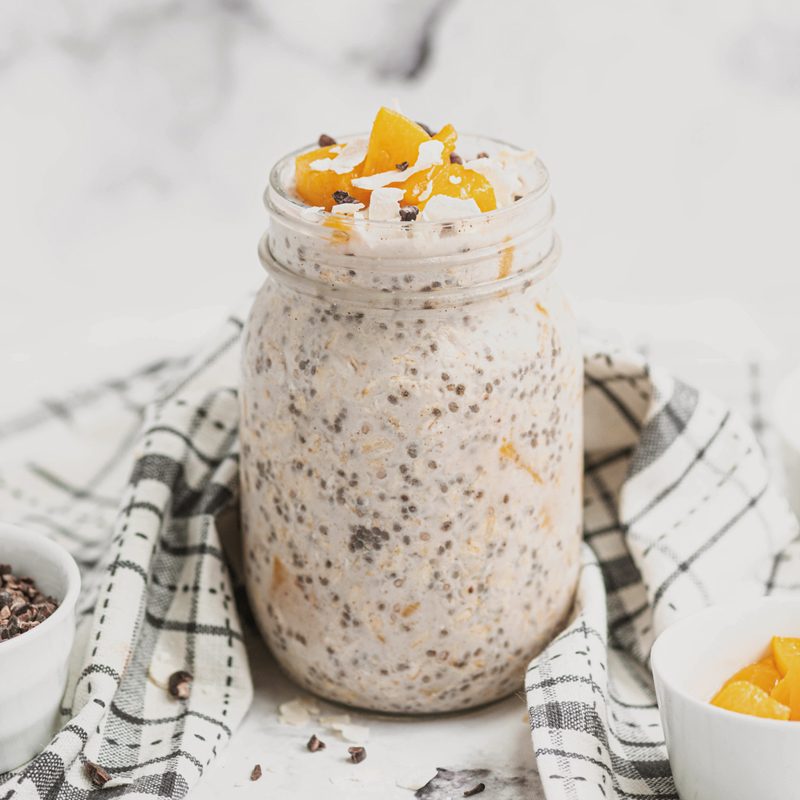
This oatmeal recipe comes from Abbie Gellman, RD, a chef and registered dietitian, Chef Abbie Gellman.
“The brain thrives on the glucose from the carbohydrates in the oats,” notes Joan Salge Blake, RDN, nutrition professor at Boston University and host of the nutrition and health podcast, SpotOn!
The recipe makes two servings.
Ingredients:
3/4 cup rolled oats
14.5-ounce can sliced California cling peaches in light syrup, drained and chopped
1 tablespoon chia seeds
1/2 teaspoon cinnamon
1 1/2 cups unsweetened almond milk
Pinch of salt
1 teaspoon vanilla
Coconut flakes or chocolate chips (optional garnishes)
Instructions:
Mix all ingredients together well in a Mason jar.
Place in refrigerator overnight, and serve.
Green Banana Mint Pancakes
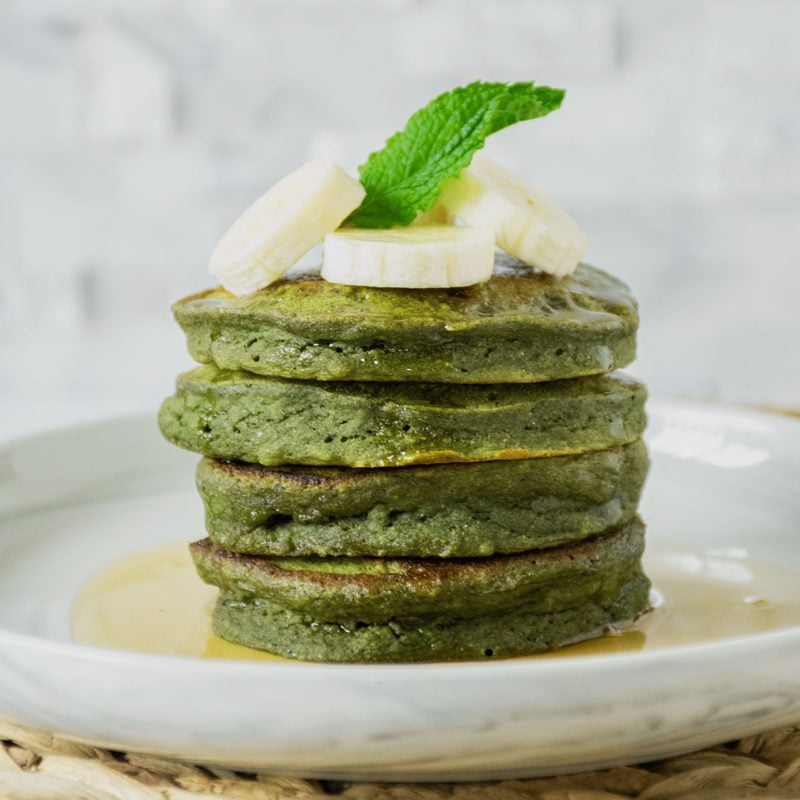
This recipe comes from Laura Yautz, RDN, a nutrition blogger at Being Nutritious.
These pancakes boast both a fruit and a veggie, which are blended into the batter.
“When we add more vegetables and fruits to meals, we’re adding more fiber and more vitamins,” says Wood. “These [nutrients] have been proven to help reduce the chances of developing cancers and certain diseases like type two diabetes and heart disease.”
Instead of using syrup as a topping, add either an egg or heated frozen fruit—and serve with a cup of plant-based milk such as flax milk. The recipe makes 12 pancakes.
Ingredients:
4 cups spinach
1/4 cup fresh mint (stems and all)
1 1/4 cups soy milk
1/4 cup dates, pitted
1 banana
1 1/2 cups whole-wheat flour
1 1/2 teaspoons baking powder
Cooking spray, if needed
Instructions:
Combine spinach, mint, soy milk, dates, and banana in a high-speed blender. Blend on high until mixture is very smooth.
In a large bowl, mix flour and baking powder.
Pour spinach mixture into flour mixture, and stir until just combined.
Preheat griddle or large pan. Spray with cooking spray if not nonstick.
Pour about 1/4 cup of the mixture onto the griddle for each pancake.
Cook until golden brown on the bottom. Flip; cook a few minutes more, until golden brown.
Coconut Matcha Energy Bites
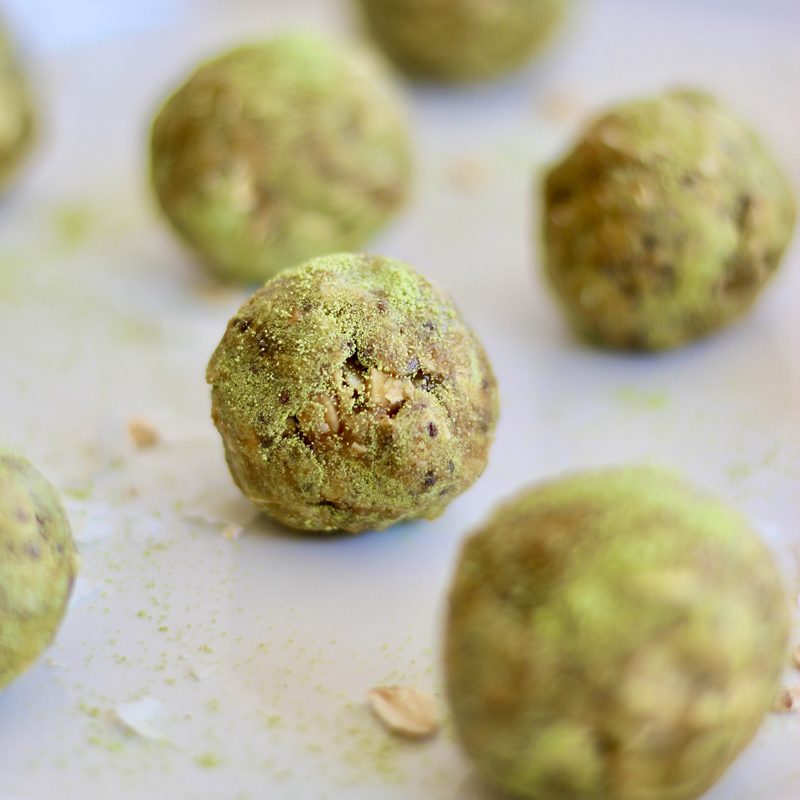
This recipe comes from Mackenzie Burgess, RDN, Cheerful Choices. “These are the perfect bites to power your day,” she says. “I like to make a bunch of them, store them in the freezer, and then pop out a few for a quick, grab-and-go breakfast!”
Pair two or three bites with a cup of berries. The recipe makes 12 bites.
Ingredients:
1 cup rolled oats
1/4 cup shredded or flaked coconut, unsweetened
2 tablespoons chia seeds
1 tablespoon matcha powder, plus more for rolling
1/2 cup nut or seed butter of choice
1 tablespoon almond milk
3 tablespoons maple syrup
Instructions:
Combine oats, coconut, chia seeds, and matcha in a large bowl.
Add in nut or seed butter and almond milk. Stir to combine. Mixture should be slightly sticky but still crumbly.
Add in maple syrup, 1 tablespoon at a time, stirring until mixture starts to come together in a sticky ball. If mixture is still too dry, add in more liquid.
Place bowl in refrigerator or freezer for at least 30 minutes, then roll mixture into balls using hands. Roll in more matcha to coat the outside, if desired.
Store in the fridge until ready to eat. Keep any leftovers in the fridge for up to one week or the freezer for up to three months.


















